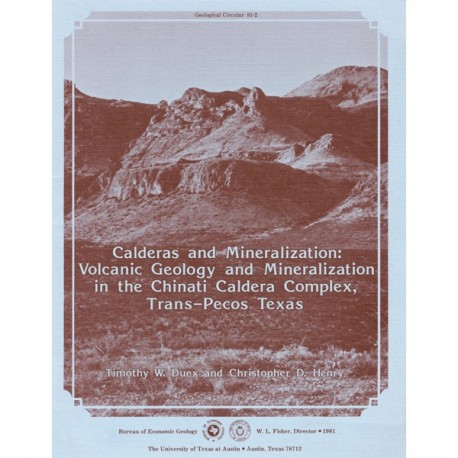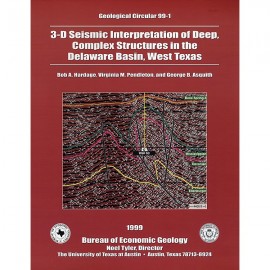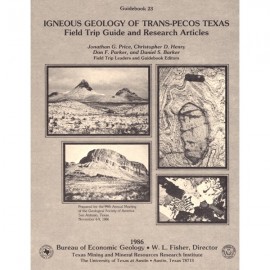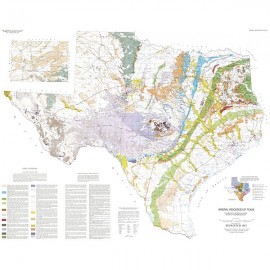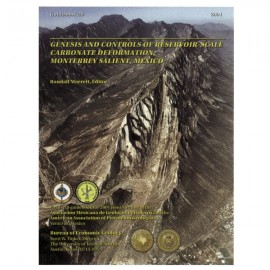Geological Circulars
-
Books & Reports
- Reports of Investigations
- Guidebooks
- Udden Series
- Geological Circulars
- Down To Earth
- Atlases of Major Oil and Gas Reservoirs
- Texas Memorial Museum Publications
- Environmental Geologic Atlas of the Texas Coastal Zone
- Mineral Resource Circulars
- Other Reports
- Seminars and Workshops
- Handbooks
- Submerged Lands of Texas
- Symposia
- Annual Reports
- Open File Reports
-
Maps & Cross Sections
- Thematic Maps
- Miscellaneous Maps, Charts & Sections
- Geologic Atlas of Texas
- STATEMAP Project Maps
- Geologic Quadrangle Maps
- Cross Sections
- Highway Geology Map
- Energy and Mineral Resource Maps
- Shoreline Change and Other Posters
- Wilcox Group, East Texas, Geological / Hydrological Folios
- Bouguer Gravity Atlas of Texas
- River Basin Regional Studies
- Featured Maps
- Posters
- Teachers & the Public
-
Geological Society Publications
- Gulf Coast Association of Geological Societies
- Alabama Geological Society
- Austin Geological Society
- Corpus Christi Geological Society
- Houston Geological Society
- Lafayette Geological Society
- Mississippi Geological Society
- New Orleans Geological Society
- South Texas Geological Society
- GCS SEPM Publications
- Historic BEG & UT Series
Calderas and Mineralization: Volcanic Geology and Mineralization in the Chinati Caldera Complex, Trans-Pecos Texas
GC8102
A free, digital version of this publication can be found on: Texas ScholarWorks
GC8102. Calderas and Mineralization: Volcanic Geology and Mineralization in the Chinati Caldera Complex, Trans-Pecos Texas, by T. W. Duex and C. D. Henry. 14 p., 6 figs., 1 table, 1981. ISSN: 0082-3309. Print.
To purchase this publication as a PDF download, please order GC8102D.
ABSTRACT
This report describes preliminary results of an ongoing study of the volcanic stratigraphy, caldera activity, and known and potential mineralization of the Chinati Mountains area of Trans-Pecos Texas. Many ore deposits are spatially associated with calderas and other volcanic centers. A genetic relationship between calderas and base and precious metal mineralization has been proposed by some (Albers and Kleinhampl, 1970) and denied by others (McKee, 1976, 1979). Steven and others (1974) have demonstrated that calderas provide an important setting for mineralization in the San Juan volcanic field of Colorado. Mineralization is not found in all calderas but is apparently restricted to calderas that had complex, post-subsidence igneous activity. A comparison of volcanic setting, volcanic history, caldera evolution, and evidence of mineralization in Trans-Pecos to those of the San Juan volcanic field, a major mineral producer, indicates that Trans-Pecos Texas also could be an important mineralized region. The Chinati caldera complex in Trans-Pecos Texas contains at least two calderas that have had considerable postsubsidence activity and that display large areas of hydrothermal alteration and mineralization. Abundant prospects in Trans-Pecos and numerous producing mines immediately south of the Trans-Pecos volcanic field in Mexico are additional evidence that ore-grade deposits could occur in Texas.
Keywords: calderas, Chinati caldera, Chinati Mountains, San Juan volcanic field, Trans-Pecos Texas, minerals, mineralization
Citation
Duex, T. W., and Henry, C. D., 1981, Calderas and Mineralization: Volcanic Geology and Mineralization in the Chinati Caldera Complex, Trans-Pecos Texas: The University of Texas at Austin, Bureau of Economic Geology, Geological Circular 81-2, 14 p.
